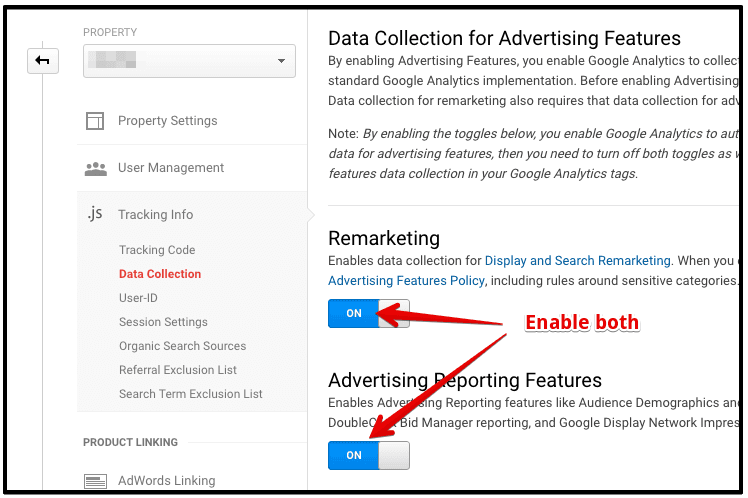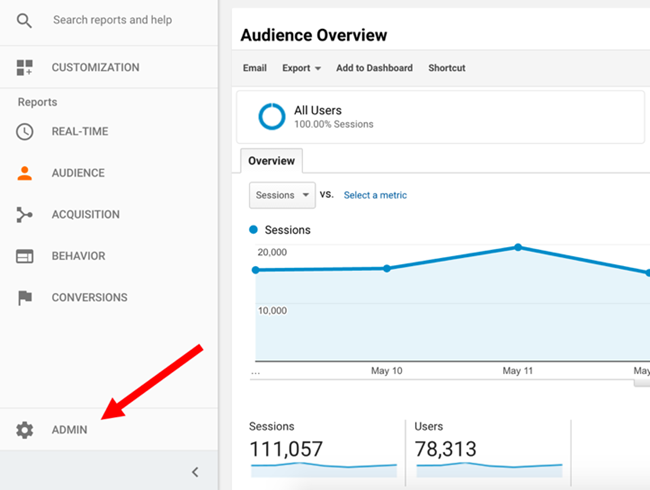Understanding the Power of Remarketing In Google Analytics
Understanding the Power of Remarketing In Google Analytics
Blog Article
Optimize Your ROI With Remarketing in Google Analytics
By using the power of customer information and customizing ads to certain audience sectors, organizations can significantly magnify their conversion rates. The trip to maximizing ROI with remarketing is a nuanced path paved with insights and opportunities that can improve the trajectory of your advertising and marketing endeavors.
Understanding Remarketing in Google Analytics
Understanding remarketing in Google Analytics is crucial for optimizing your digital advertising method. Remarketing permits you to target customers who have previously visited your site or communicated with your application, offering them with tailored advertisements as they browse various other sites or utilize other apps within the Google Present Network. This strategy assists maintain your brand name top of mind and encourages customers to go back to your site, inevitably boosting the probability of conversion.
By using Google Analytics, you can track the efficiency of your remarketing projects, getting beneficial understandings into customer actions, involvement, and conversions. This data enables you to improve your targeting, messaging, and bidding strategies to improve the total effectiveness of your campaigns.
In addition, comprehending the various kinds of remarketing checklists offered in Google Analytics, such as typical, vibrant, and comparable audiences, allows you to produce extremely segmented and personalized campaigns tailored to particular customer sectors. This level of granularity can significantly enhance the significance and influence of your remarketing efforts, eventually optimizing your roi.
Setting Up Remarketing Checklists
To properly implement remarketing projects in Google Analytics, the first action entails configuring and developing remarketing checklists targeting certain individual segments based upon their interactions with your website or app. By establishing remarketing checklists, you can customize your advertising and marketing initiatives to reach users that have already revealed rate of interest in your services or products.
To begin, navigate to the Admin section of your Google Analytics account and choose the Property where you wish to develop the remarketing checklist. Then, under the Property column, click 'Target market Definitions' and select 'Audiences.' Next off, click the red 'New Audience' button and pick 'Develop New' to define the criteria for your remarketing listing.

Crafting Reliable Remarketing Ads

When crafting your ads, concentrate on developing eye-catching headlines and engaging visuals that stand apart to possible consumers. Integrate strong calls-to-action that encourage individuals to revisit your site and finish a preferred action. Use dynamic remarketing to show customized advertisements including service or products that customers have formerly checked out on your website.
Furthermore, make certain that your advertisements are mobile-friendly because a substantial part of net website traffic originates from smart phones. Examination different advertisement variations to determine which layouts and messages drive the navigate to this site very best outcomes. By continually refining and enhancing your remarketing advertisements based upon performance data, you can optimize their effectiveness and enhance your return on investment.
Analyzing Remarketing Efficiency

Via Google Analytics, marketing professionals can track the performance of their remarketing projects in real-time, allowing them to determine patterns, patterns, and areas for enhancement promptly. By analyzing the information, online marketers can determine which advertisements are doing well, which target market sections are responding positively, and which networks are driving the most conversions. This degree of granularity allows marketers to make data-driven choices to optimize their remarketing campaigns for much better outcomes.
Optimizing ROI With Remarketing
Analyzing remarketing data in Google Analytics enables marketing professionals to pinpoint chances for enhancing roi (ROI) with critical adjustments - What Is “Remarketing” In Google Analytics?. To optimize ROI with remarketing, it is important to recognize the actions of your target market. By examining user interactions, such as the pages they went to, the items they watched, or the activities they handled your site, you can customize your remarketing campaigns much more successfully
Segmenting your audience based on their behavior permits you to create tailored and targeted ads that are most likely to reverberate with them. By revealing relevant ads to certain segments of your target market, you can enhance the possibilities of go to this website conversion and eventually boost your ROI.
Moreover, testing various advertisement creatives, messaging, and offers can aid determine what reverberates finest with your audience. A/B testing allows you to try out various elements of your ads to determine what drives the greatest involvement and conversion rates.
Final Thought
To conclude, maximizing ROI with remarketing in Google Analytics needs a strategic technique to evaluating individual actions, segmenting audiences, developing tailored advertisements, and maximizing project performance. By leveraging my latest blog post data-driven insights and testing various strategies, businesses can enhance their remarketing efforts to drive greater engagement and conversion rates. This systematic method makes certain that sources are efficiently assigned in the direction of maximizing rois in remarketing campaigns.
Next, click on the red 'New Target market' switch and choose 'Create New' to specify the specifications for your remarketing listing.
By continuously refining and enhancing your remarketing ads based on efficiency information, you can optimize their performance and enhance your return on financial investment.
By delving into these understandings, marketers can acquire an extensive understanding of exactly how their remarketing efforts are resonating with their target audience and driving conversions. To make best use of ROI with remarketing, it is crucial to recognize the actions of your audience.In verdict, taking full advantage of ROI with remarketing in Google Analytics needs a tactical strategy to assessing customer actions, segmenting target markets, producing customized advertisements, and optimizing project efficiency.
Report this page